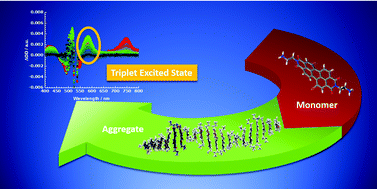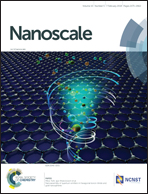A water-soluble, bay-functionalized perylenediimide derivative – correlating aggregation and excited state dynamics†
Abstract
The aggregation and the photophysics of a water soluble perylenediimide (PDI) derivative that features two bromine substituents in the bay positions has been probed. Non-fluorescent aggregates were found to be present at concentrations of 1.0 × 10−5 M. In situ small-angle X-ray scattering (SAXS) measurements and complementary molecular modeling showed the presence of PDI aggregates. In their singlet excited states, the PDI aggregates are characterized by distinct transient fingerprints and rapid deactivation, as revealed by pump–probe experiments on the femto-, pico-, nano-, and microsecond timescales. The product of this deactivation is a PDI triplet excited state. The efficiency of the triplet formation depends on the concentration, and hence on the degree of aggregation. Notably, for PDI concentrations in the range of the critical micelle concentration, the efficiency of intersystem crossing is close to zero. In short, we have demonstrated, for the first time, aggregation-induced formation of triplet excited states for PDI derivatives.



 Please wait while we load your content...
Please wait while we load your content...